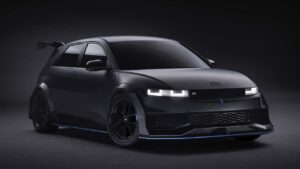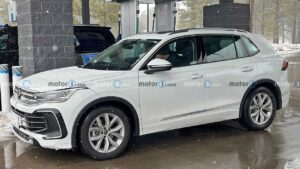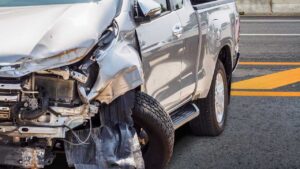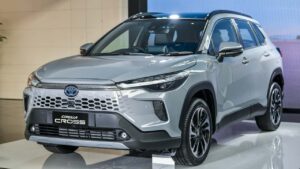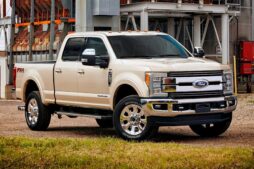Automakers Claim Safety Support, Not Assurance
Recent cars come with a variety of driver-assistance features, yet a fresh study by AAA highlights that these are meant to aid drivers and not substitute for vigilant and intelligent driving. This is particularly evident in reverse automated emergency braking systems, which AAA discovered are far from effective in preventing accidents.
What is the definition of “deficient”? In a series of 40 trials with four different SUVs from various car companies, only one concluded without a collision caused by cross traffic. It is perhaps even more astonishing that half of the tests resulted in the vehicles hitting stationary individuals standing behind them. In 10 out of 20 experiments, the SUVs hit a pedestrian target representing a child, and in five of those occurrences, the automated braking mechanism did not even engage.
These are the findings, however, let us delve deeper into the examination and the cars included. AAA procured a Hyundai Tucson, Volkswagen Tiguan, Mazda CX-30, and a Lexus RX 350, all from the 2023 lineup, which AAA affirms to be indicative of commonly used compact and mid-sized SUVs at present.
Two scenarios were utilized to perform tests on cross-traffic alerts and braking systems: backing out of perpendicular parking spots and angled spaces, both while a large vehicle was parked to the right. In the stationary pedestrian test, a human figure standing at a height of 45 inches was positioned approximately six feet behind the SUV’s center line.
In the cross-traffic experiments, a robotic vehicle functioned as the moving traffic. In both trials, it advanced at a constant speed of 15 miles per hour. As the target approached at a distance of 200 feet, the SUVs began to reverse. The safety mechanism was solely responsible for controlling the acceleration and braking, without any human intervention. Each SUV underwent five consecutive tests, with only the Volkswagen Tiguan successfully avoiding a collision in one instance during the perpendicular trial.
Tackling angled parking can be especially challenging for vehicles equipped with automated systems. In every attempt, there were unfortunate collisions and not one SUV managed to engage the brakes during certain runs. The data gathered demonstrates that only 45 percent of the angled parking trials saw the application of brakes, in contrast to a higher success rate of 85 percent in the perpendicular runs. A noteworthy exception was the Lexus RX 350, which did not activate its brakes during any of the angled tests.
According to research, there is a 50 percent likelihood of a pedestrian being struck by a vehicle when standing directly behind it. Out of all the SUVs tested, only the Tiguan was able to avoid collisions with cross-traffic, but unfortunately it still hit the simulated child in every trial. Shockingly, in two of these tests, the Tiguan did not even attempt to apply the brakes. The Mazda CX-30 fared even worse, hitting the pedestrian in each run and failing to brake on three occasions. This is concerning.
According to Greg Brannon, the director of automotive engineering at AAA, it is important for drivers to understand that advanced driving systems are not meant to be relied on solely for preventing collisions. Instead, they should be used as a tool to increase awareness of one’s surroundings and promote safe driving practices. Brannon stresses the need for updated testing requirements for these systems, ensuring consistency and accounting for unexpected objects and realistic scenarios. The ultimate goal is to maximize the safety benefits for drivers, pedestrians, and cyclists.
We contacted the car manufacturers featured in this examination for their perspectives on their safety systems. According to Lexus, their Rear Cross Traffic Braking technology notifies drivers beforehand and then activates the brakes to prevent or minimize collisions. However, it is not intended to fully stop the car. In the event that it does come to a complete stop, the brakes will disengage after about two seconds. Additionally, Lexus reiterates AAA’s stance with the following declaration:
Volkswagen released a comparable statement regarding their rear brake system for automobiles:
Hyundai declined to make a specific comment on the study, however, they did release a statement addressing their Rear Cross-Traffic Collision-Avoidance Assist (RCCA) technology:Upon review of the research presented, Hyundai acknowledges its importance in the ongoing effort to promote vehicle safety. Our RCCA system is designed to actively detect and prevent collisions when reversing out of a parking space or driveway. By utilizing advanced sensors and algorithms, it alerts drivers of approaching vehicles and applies brakes if necessary to avoid a potential accident.We also acknowledge the limitations of any technology and continue to strive for improvement in our systems. We encourage customers to always practice safe driving habits and use caution when operating any vehicle, even those equipped with safety features.Overall, we are grateful for the opportunity to contribute to the advancement of vehicle safety and will continue to prioritize the development of innovative technologies for the benefit of our customers.
We are currently anticipating a statement from Mazda, which will be included as soon as it becomes accessible.
The comprehensive analysis conducted by AAA provides a significantly more in-depth examination of the techniques and factors used in the assessment, yet the main message is quite straightforward. Advanced systems that can detect obstacles and automatically apply the brakes provide an added layer of support, but no further than that. It remains crucial for drivers to remain cautious and attentive while reversing.
Source: AAA
